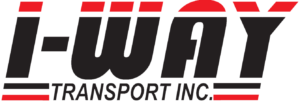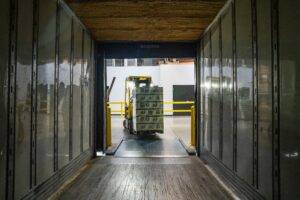The key to running a successful business is to ensure that all of your time, energy, and resources are used to their fullest capacity and that your organization is built around sound financial practices. A test case on the efficient reduction of freight costs is incredibly beneficial for understanding how to cut costs efficiently in the transportation and logistics sector. When it comes to the logistics and distribution industry, one of the most difficult problems to solve will always be the cost of freight and transportation.
Both inflationary and competitive price pressures will constantly be exerted on a number of different aspects of costs, including, to name just a few examples, fuel, vehicles, and transport-related logistics.
These days, the expenses of transportation and logistics are soaring for a variety of different reasons. Inadequate planning, a lack of transparency, and the making of poor decisions can all contribute to increased total expenses, missed delivery and appointment targets, dissatisfied clients, and lost business. Several different actions can be performed in order to achieve the goals of lowering transportation costs, enhancing the operations of supply chains, and maximizing the total cost-efficiency ratio. Here are some crucial things to think about while trying to lower your logistics-related transportation expenditures. But before we get into that, let’s take a brief look at the logistics price tag.
What are Logistics Costs?
What constitutes a logistical expense will be defined differently by various businesses. However, for most purposes, logistics costs comprise all costs incurred from sourcing to delivery of the goods. The expenses incurred from beginning to finish of the supply chain are known as logistics costs, and they include things like inventory, labor, packaging, shipping, and overhead. The majority of these expenditures go toward logistics service providers, but they can also include things like logistics software, storage and transportation equipment, and vehicle upkeep.
1. Transportation
Once the word “logistics” is mentioned, most people immediately think of transportation. That’s because transportation is a huge part of your operation and crucial to getting goods where they need to go in your supply chain. In-house transportation services are available, as are those provided by freight carriers, brokers, and 3PLs. Thus, transportation expenses may incorporate not only the price of their services, but also the price of everything from gas to postage.
2. Warehousing
Warehouse costs, such as rent and storage space cost per square foot, will certainly eat up a sizable chunk of your logistics budget. Lease agreements and the purchase of business property are two examples of the kind of long-term investments that could add to these expenses. Expenses associated with warehousing may include the purchase and implementation of a warehouse management system, as well as the general expenditures associated with running a warehouse, such as the cost of shipping materials and machinery.
3. Fulfillment
Unless you have your own warehouse, you probably use a third party to handle storage and shipping. It also means you’ll have to pay for things like “pick and pack” labor and storage space in addition to the standard fulfillment costs. Box fees, order insert fees, custom labeling fees, returns fees, kitting fees, and account management fees are all examples of what could be counted as fulfillment charges.
4. Inventory
Inventory, procurement, and storage all contribute significantly to logistics expenses, as do the myriad of fees connected with keeping track of things like stock levels, orders, and deliveries. Loss, theft, shrinkage, obsolescence, discounts on sales, discounts on volume, and other charges are all accounted for in the total cost of inventory.
5. Labor
No matter what you’re selling, factoring in the cost of labor is essential if you want to keep logistical expenses low. That sum accounts for all logistics-related personnel costs, such as management, customer service, and others. Expenses related to staff and labor could also include the cost of finding and hiring new hourly workers and managers, as well as the cost of payroll, liability insurance, and potential employee benefits.
Different Ways to Reduce Transportation Costs In Logistics
1. Combine Shipments
If you send many partial shipments to the same location on a weekly basis, it is in your best interest to consolidate those shipments into a single full shipment. This will save you time and money. Because of this method, you may be able to reduce the total number of loads that you are responsible for paying for, which will bring your transportation expenses down to the absolute minimal level necessary.
2. Get Your Driver’s Well-Optimized Routes
If you take the wrong road, all your careful preparation will be for naught. No one is in the vehicles. Unfortunately, drivers have to deal with uneven workloads. As a result of increased traffic and lengthier commute times, drivers spend more time behind the wheel. This results in a dramatic increase in both fuel consumption and costs. The financial line will appear considerably worse if overtime is paid to drivers who spend more time on the road than anticipated.
You should use a route planner to make sure your routes are precise and optimal. By taking into account variables like traffic, weather, sunrise/sunset times, one-ways, avoidance zones, vehicle weight, and cargo capacity, this application streamlines the formerly laborious task of route planning.
3. Keep An Eye on the Drivers
Even if you spend the most time and effort planning the most efficient routes for your field representatives and drivers, they will have little effect on your overall expenditures if they are not followed. To make up for late deliveries or appointments, they may take unnecessary breaks, let their vehicles sit idly for too long, apply the brakes too often, or even accelerate too quickly. Consequences like higher gas bills and traffic accidents are an inevitable outcome of such behavior. Use a cheap GPS device to keep tabs on your drivers and vehicles in real time, and get notifications whenever they reach predetermined speed thresholds. Vehicle theft is another problem that can be mitigated with the use of a tracker.
4. Concentrate on Making Wise Choices
It doesn’t matter how skilled a logistics analyst you are if you aren’t making informed choices if you want to reduce the amount of money spent on logistics. It will be impossible to uncover unnecessary spending if you do not have the capability to monitor where the money in your logistics budget is going. Your team will be better able to identify waste, reduce expenses, and improve supply chain efficiency if they have access to the information that is collected from a WMS or TMS.
5. Educate & Reward Field Reps
You can’t get the most out of your transportation procedures without the full buy-in of your field representatives. Explain to them why it’s crucial for the company to cut down on fuel costs, and how they can help. Motivating customers to save money by rewarding them for using less gas will have a multiplicative effect. A route optimizer is useful once again. You can use the information gleaned through its reporting and analytics to pinpoint individual fuel expenditures and offer constructive criticism.
6. Prioritize Your Customers
Customers will be satisfied if logistical support costs are kept to a minimum per purchase (and this Fast-Track customer retention customers). Businesses can keep up and efficiently manage the massive weight of cutting logistics costs by exceeding customer expectations, which is one of the finest supply chain cost reduction techniques. A proper evaluation of logistics expenses should also take into account the quality of customer service provided, as there is a strong correlation between customer happiness and these savings.
Final Words
There are hundreds of hidden expenses associated with the logistics. The most effective method for evading them is to hand the logistics to a third-party logistics provider such as I-Way Logistics. I-Way is the On-Demand Warehousing and Third Party Logistics Provider that can offer a complete end-to-end logistics solution. With a nationwide network of warehouses and fulfillment facilities, I-Way is the undisputed leader in the industry.




